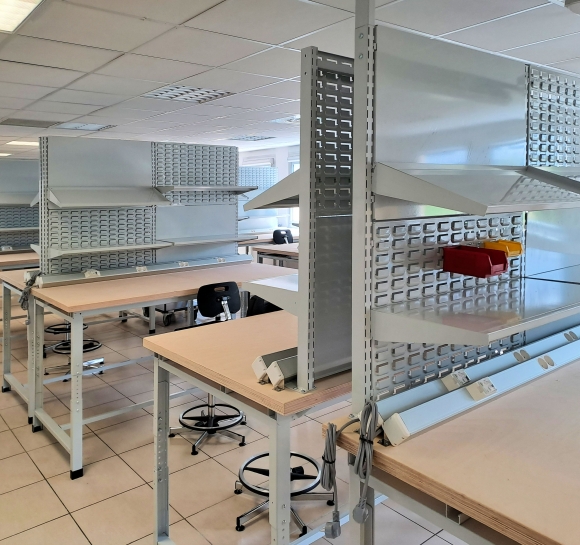
What height workbench should I choose?
You're looking to buy or have already installed one or more workbenches in your workshop, but you don't know exactly how high you should set them. This article will help you discover the main criteria for making your choice and setting your workbenches to the right height for the work they'll be doing and the users they'll be working with.
Workbench height
The height of a workbench must be adapted to its users and uses. The aim is always to work without muscle fatigue or strain, and always with a natural posture.
User height
The size of the workbench user is the most important factor influencing the height adjustment of the workbench. For standard tasks that do not require precision or the handling of heavy loads, the height of the workbench should be set at the user's elbows.
Workbench uses
Depending on the type of work to be carried out, we recommend working on a workbench of varying heights, in order to adapt to the requirements of the task in hand. The higher the level of precision required to perform the task, the closer the operator's hands are to his eyes, and therefore the higher the workbench. Conversely, for work requiring high levels of effort, the hands will tend to drop below the elbows, and the operator will need a low workbench.

Here are several workbench height ranges based on the uses that could be applied for an average-sized user:
- Heavy-duty workbench: 85 to 90 cm ;
- Standard workbench: 90 to 105 cm;
- Precision workbench: 105 to 115 cm.

Adjusting the height of your workbench
The configuration of your workshop is likely to change over time: new tasks, new operators or a new layout. Opting for height-adjustable workbenches will enable you to keep pace with these changes and meet your specific workshop needs. Two types of adjustment are possible: manually adjustable workbenches, such as our Evolys modular workbenches, allow you to adjust the workbench by hand according to a defined pitch; electrically adjustable workbenches, on the other hand, are equipped with an electric motor for rapid height adjustment. E-lys electric workbenches can therefore be adapted to workstations where operators of different sizes come and go, and where the working height needs to be quickly adjusted between two workstations.
Horizontal reach distance
While the height of the workbench is essential, its depth should not be overlooked either. To carry out his tasks, the user must not have to stretch his arm excessively, and must have an optimal reach distance. We consider two types of ideal distances:
- The maximum reach distance, which is the distance between wrist and shoulder, should be reserved for intermittent movements;
- The comfort distance, measured with the arm in a semi-flexed position (around 2/3 of the maximum reach distance), is the limit distance for frequent movements.





